We understand how 5G will work in the millimeter range on the street and in rooms
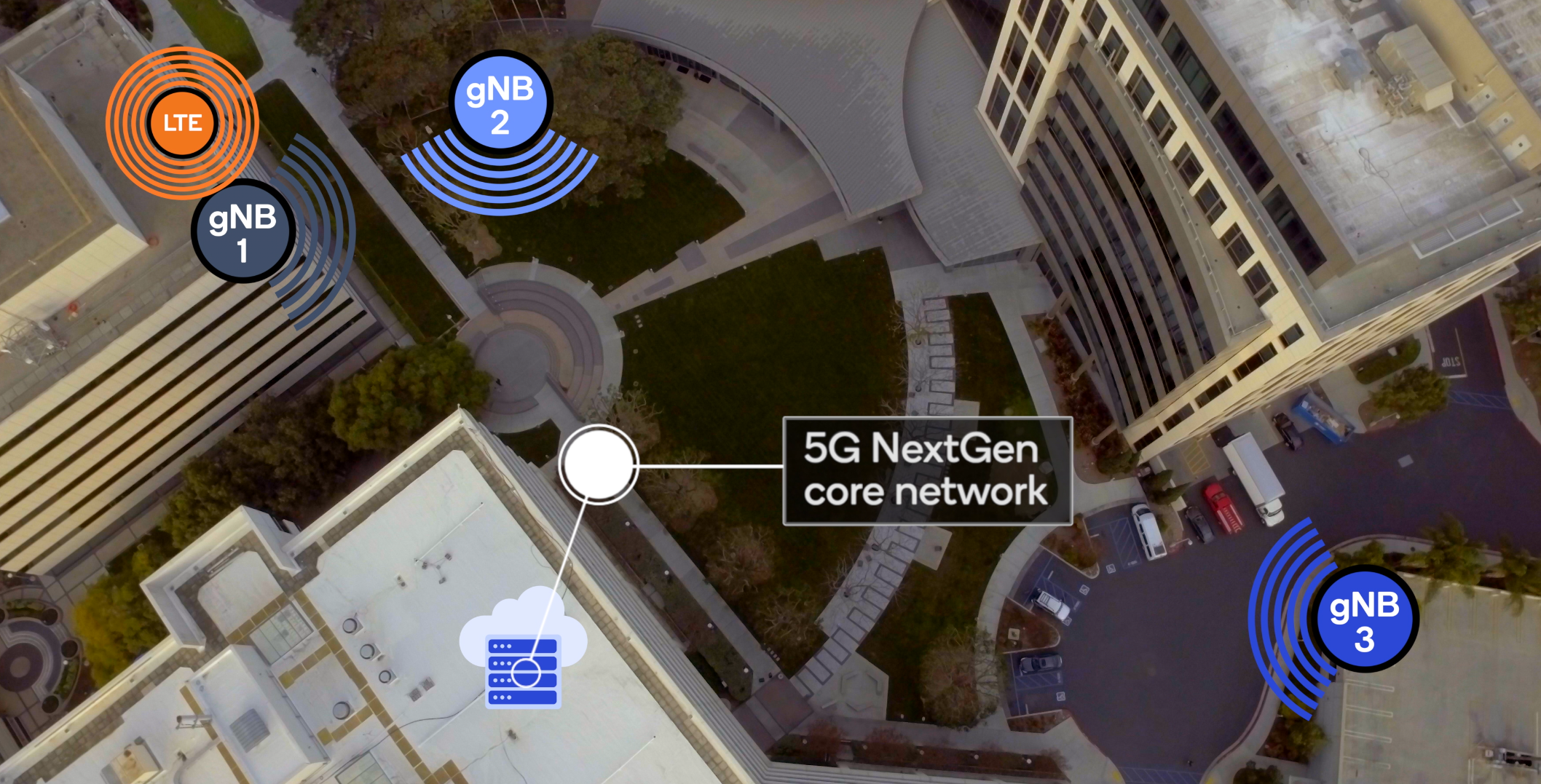
At MWC2019, Qualcomm showed a video with interesting scenarios for using an outdoor 5G network of millimeter range, both outside the office and, in some cases, indoors. Consider them in more detail.
The photo above shows the Qualcomm campus in San Diego, California - three buildings and base stations of 5G and LTE networks are visible. The 5G coverage in the 28 GHz band (millimeter wave band) is provided by three small 5G NR cells - one is installed on the roof of the building, the other on the wall of the building, and the third is in the courtyard on the pipe stand. There is also an LTE macrocell providing campus coverage.
The 5G network belongs to the NSA type, that is, it relies on the core and other resources of the LTE network. This provides increased connection reliability, because in cases where the user device is outside the 5G network coverage in the millimeter frequency range, the connection is not interrupted, but switched to LTE mode (fallback) and then returned to 5G mode when it becomes possible again.
')
To display the operation of this network, a test subscriber device based on a Qualcomm X50 5G modem is used, which supports both sub6 frequencies and the millimeter-frequency range. The device has 3 millimeter-wave antenna modules, two of which are installed on the left and right sides of the terminal, and the third on the top.
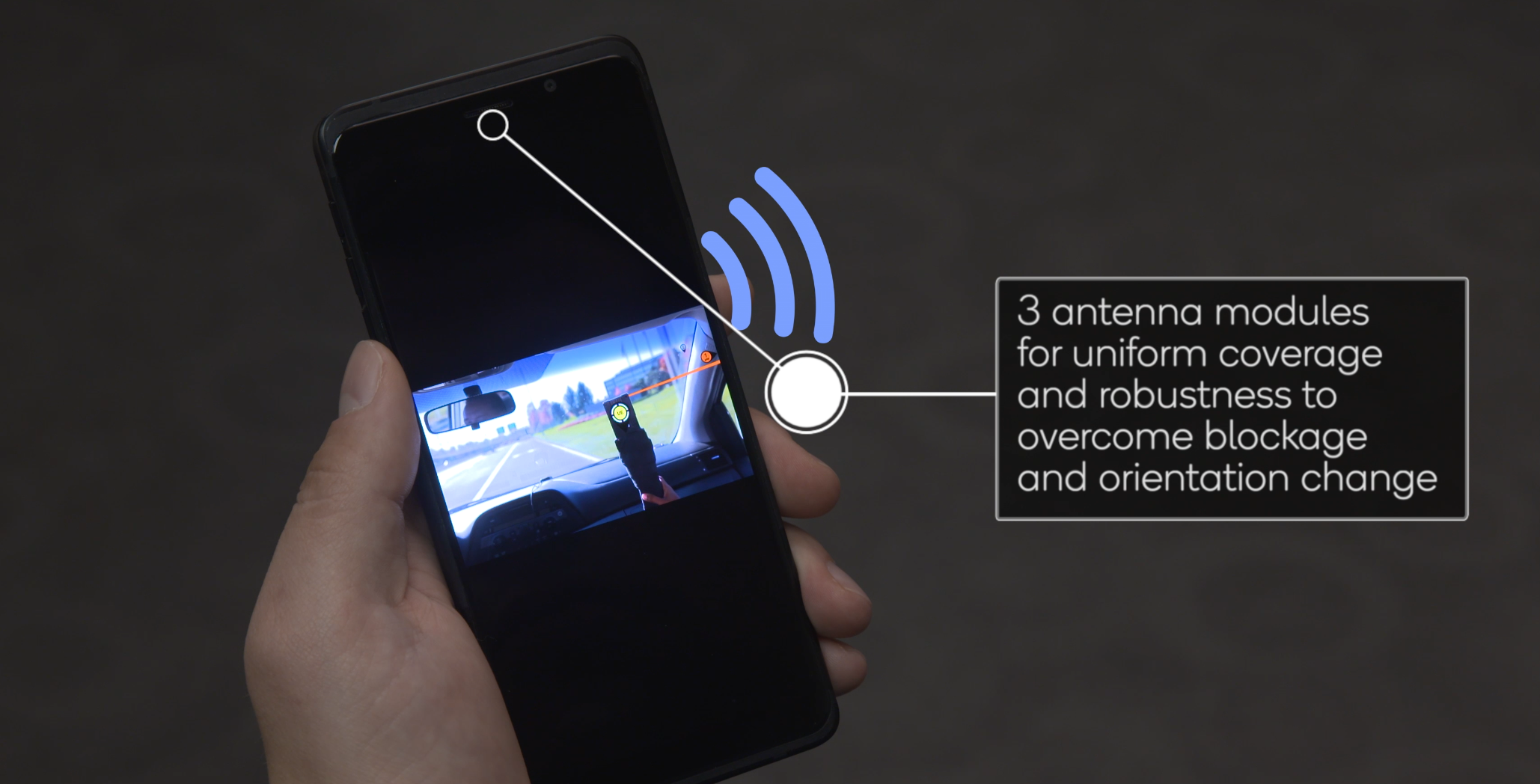
This design of the terminal and the network ensures high reliability of the connection even in cases where the beam from the antenna of the base station 5G is blocked by the hand, the subscriber's body or other obstacles. The quality of the connection is almost independent of the terminal's orientation in space - the use of three spatially separated antenna modules forms a terminal antenna close to a spherical radiation pattern.

This is how gNB looks like - a small 5G cell with a flat digital active antenna of 256 elements for the millimeter range. The network demonstrates the high spectral efficiency of the downlink in both the base station and the terminal - on average, tending to 4 bit / s at 1 Hz for the base station and about 0.5 bit / s at 1 Hz for the terminal.
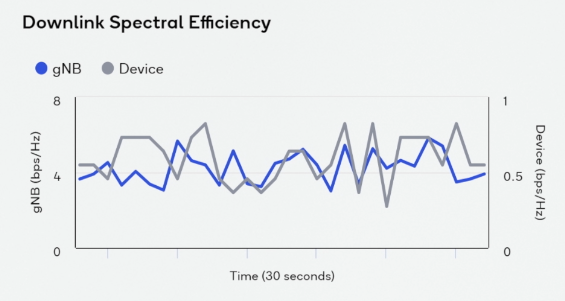
The diagram shows that communication with the terminal provides the active beam with number 6, while the station is ready to switch to communication with the terminal via beam 1 in case the parameters of beam 6 deteriorate, for example, due to its overlapping by some obstacle. The base station all the time compares the quality of communication on the active beam and on other rays, choosing the best candidate from the possible.
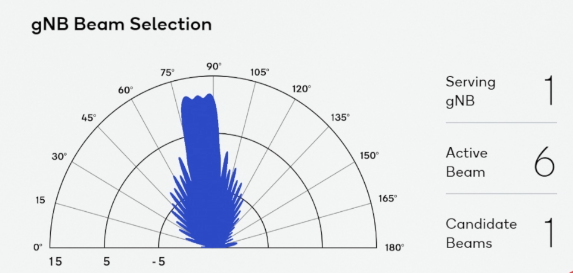
And this is how the situation looks on the side of the terminal.

It can be seen that the antenna module 2 is now active, since It currently provides the best communication options. But if something changes, for example, the subscriber moves the terminal or fingers in such a way that closes module 2 from the gNB beam, the one of the modules that can work with the 5G base station in the new “configuration” device orientation is immediately activated.
The stretched “ellipses” are the patterns of the terminal beam pattern.
This ensures mobility, coverage and connection reliability.

Connectivity is provided, both in the “direct visibility” mode of the base station and terminal antennas, and in the conditions of multipath signals.
Scenario 1. Direct visibility
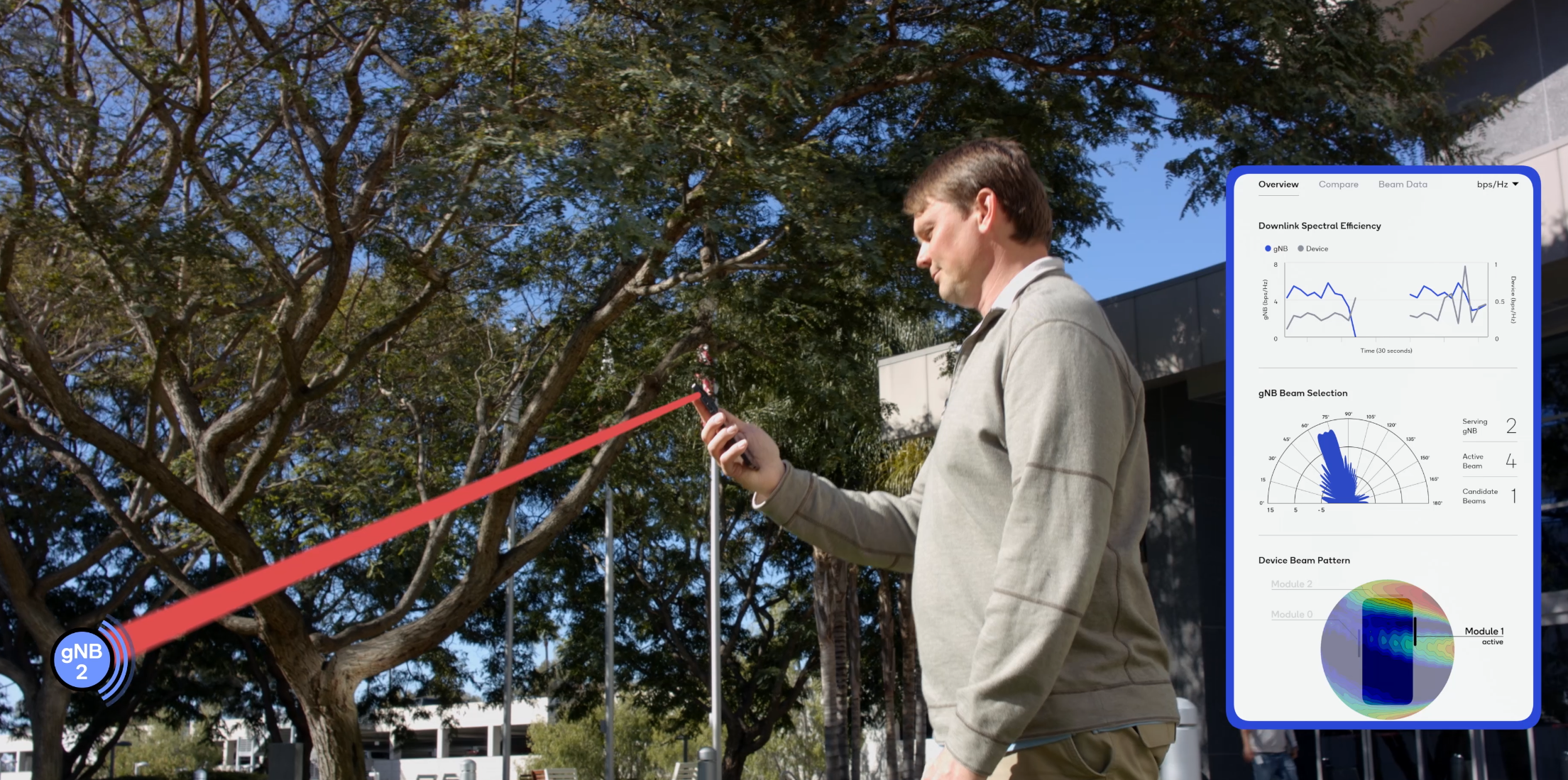
Please note that another antenna module is currently operating in the device.
But what should happen when switching to a re-reflected beam.

We see another number of the active beam, the connection is provided by another antenna module. (Data simulated).
Scenario 2. Work on the rereflection
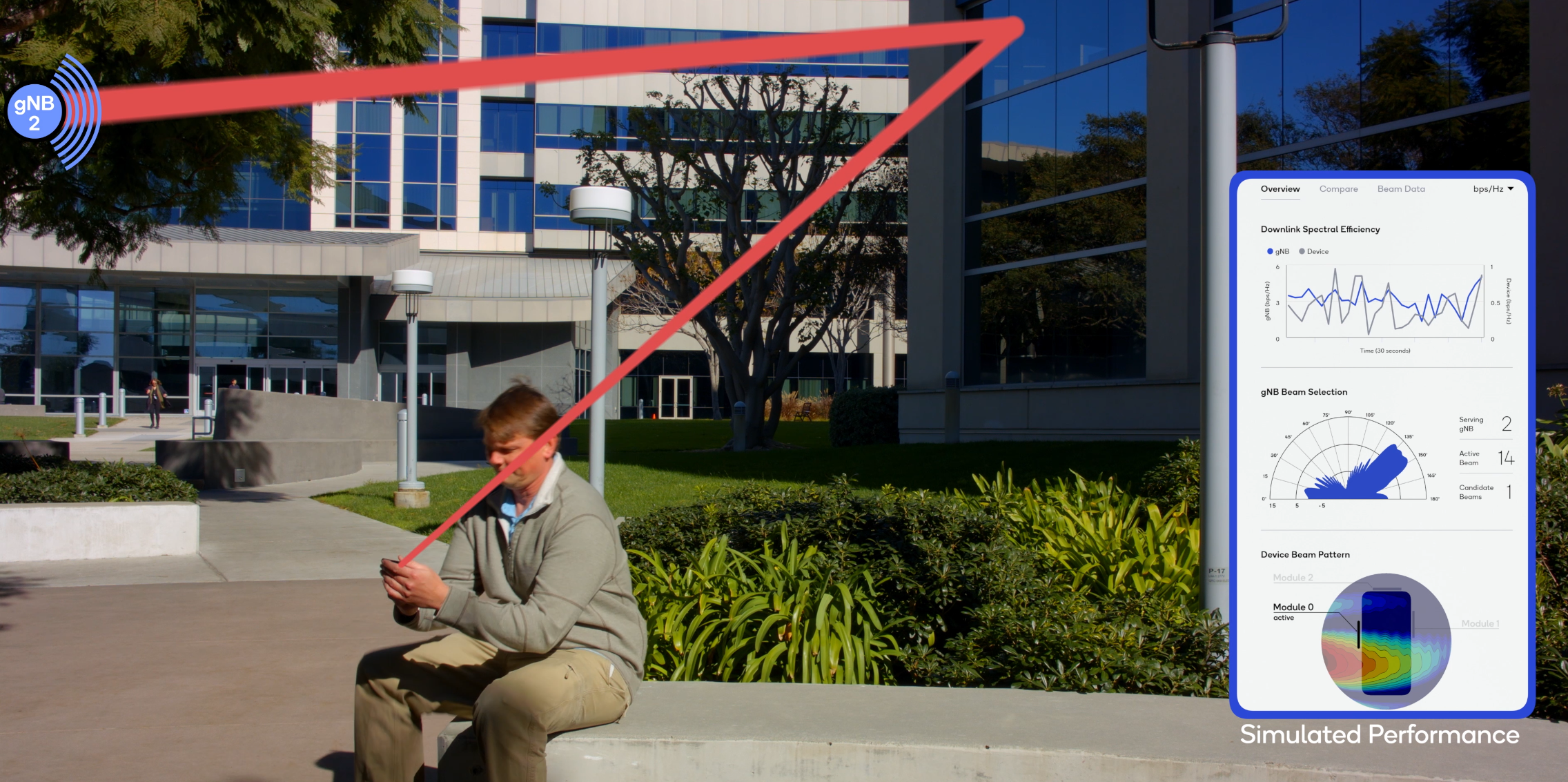
The ability to work with re-reflected rays significantly expands the formed coverage area of 5G in the millimeter range.
The LTE network at the same time provides the role of a reliable foundation, always ready to pick up the subscriber service at the moments when it leaves the 5G coverage area or give the subscriber to the 5G network in a situation when it becomes possible.
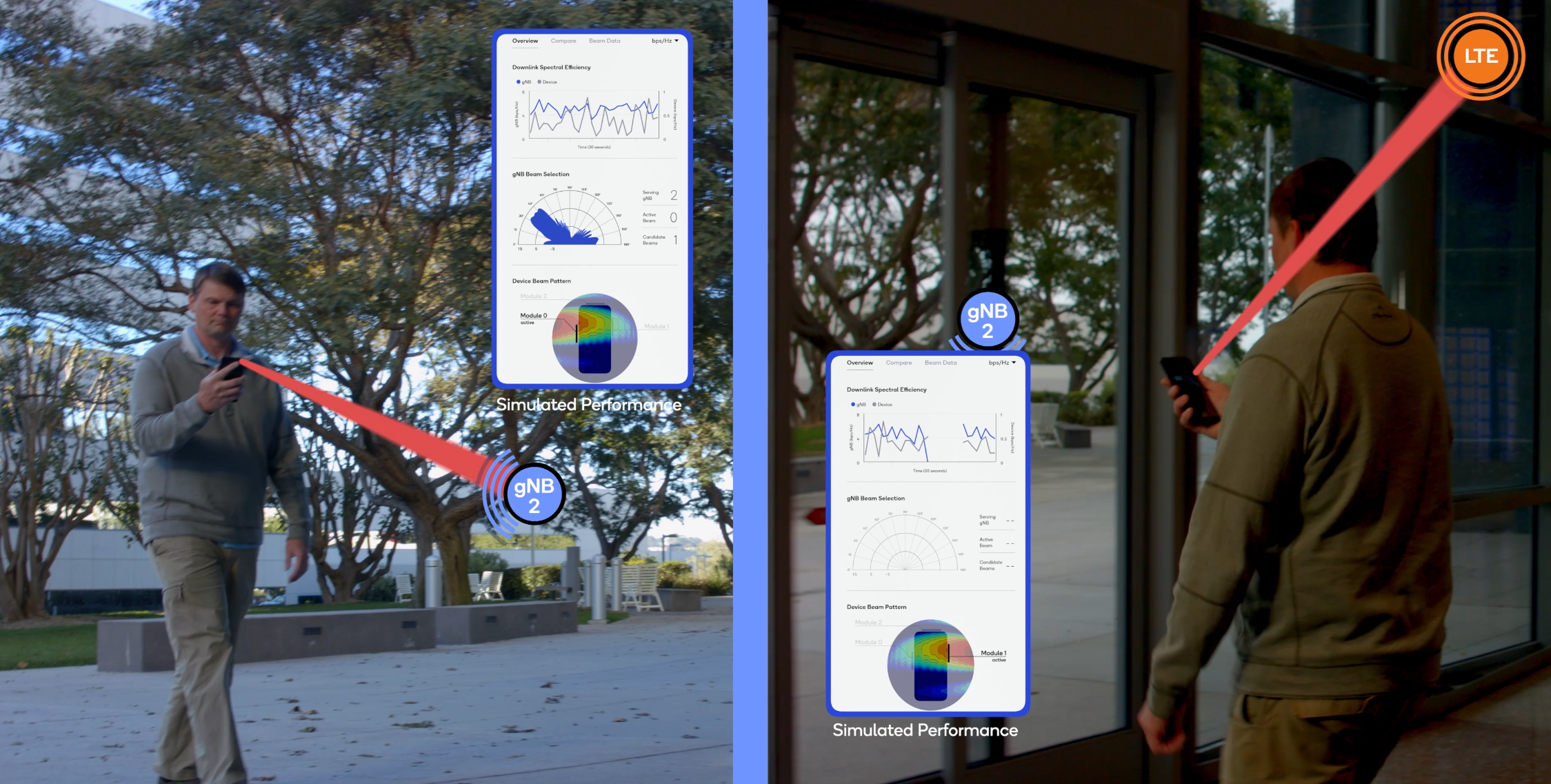
Left subscriber entering the building. Its service is provided by gNB 5G. On the right is the subscriber located in the building, while the LTE network is still engaged in it.
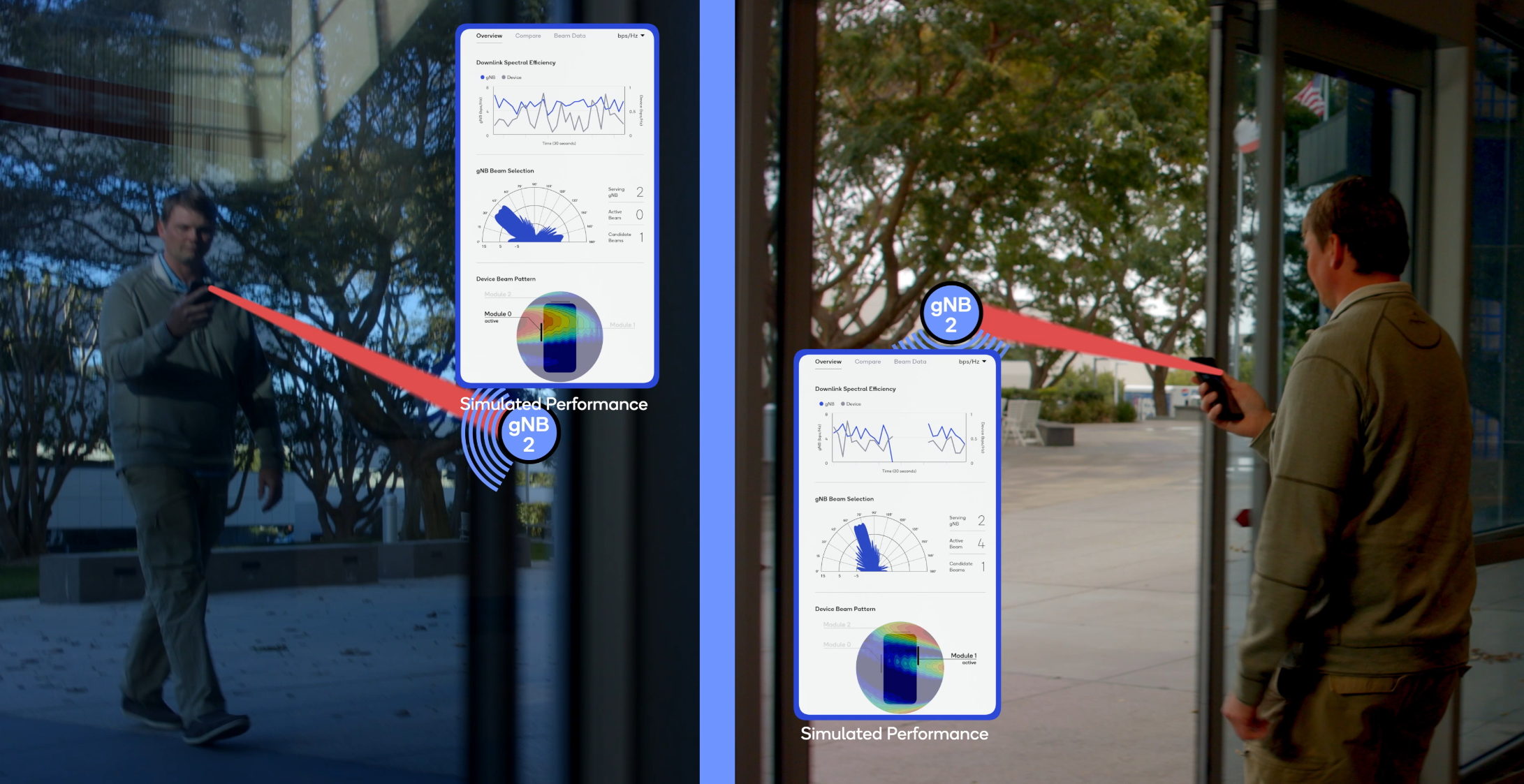
Conditions have changed. The person walking towards the building is still serviced by the 5G cell, and the person leaving the building, after the entrance door, which had weakened the 5G signal, opened, was intercepted by the 5G network and now served by it.

And now the man on the left, who entered the building and blocked the beam from the 5G base to his terminal, switched to LTE service, while the man who left the building is now “driven” by the beam from the 5G base.
In some cases, the outdoor 5G network of the millimeter range may also be available indoors. Re-reflections from buildings will also be maintained here as the environmental conditions between the antennas change.
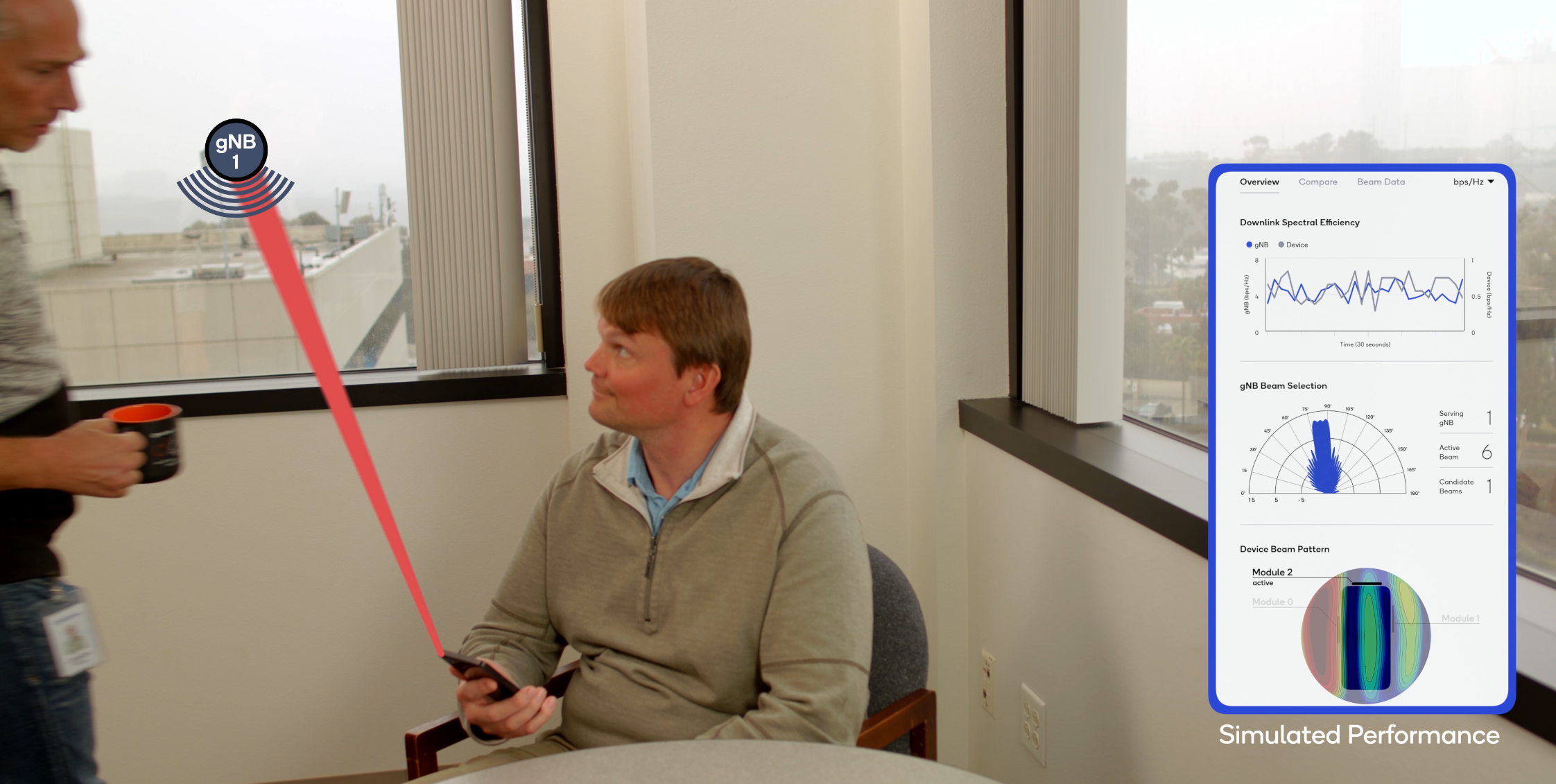
It is seen that the original signal was received from the base station on the “direct beam”.
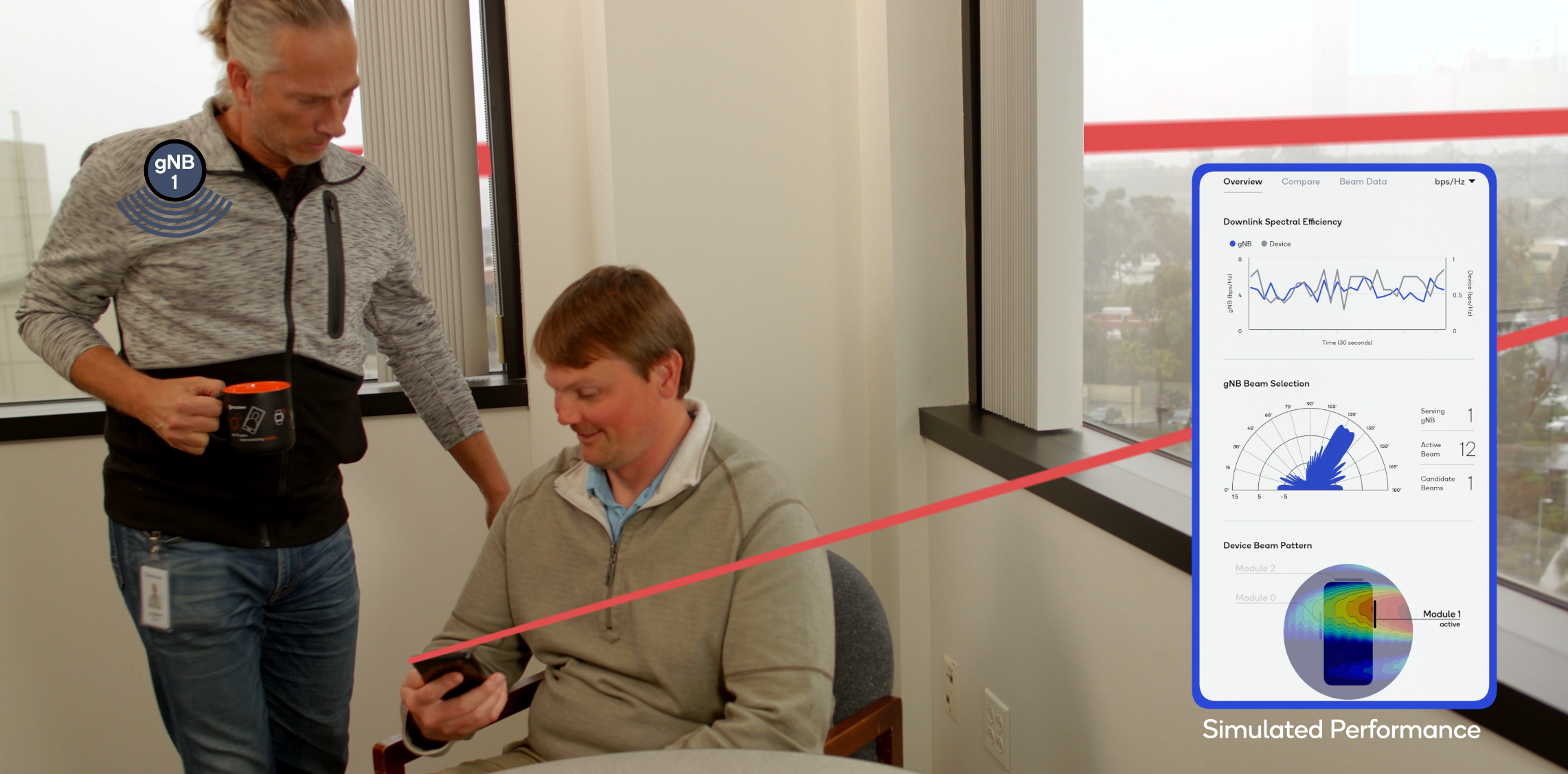
Then, the interlocutor approached and blocked the beam, but the 5G connection was not interrupted by switching to the beam reflected from the surface of the neighboring office building.
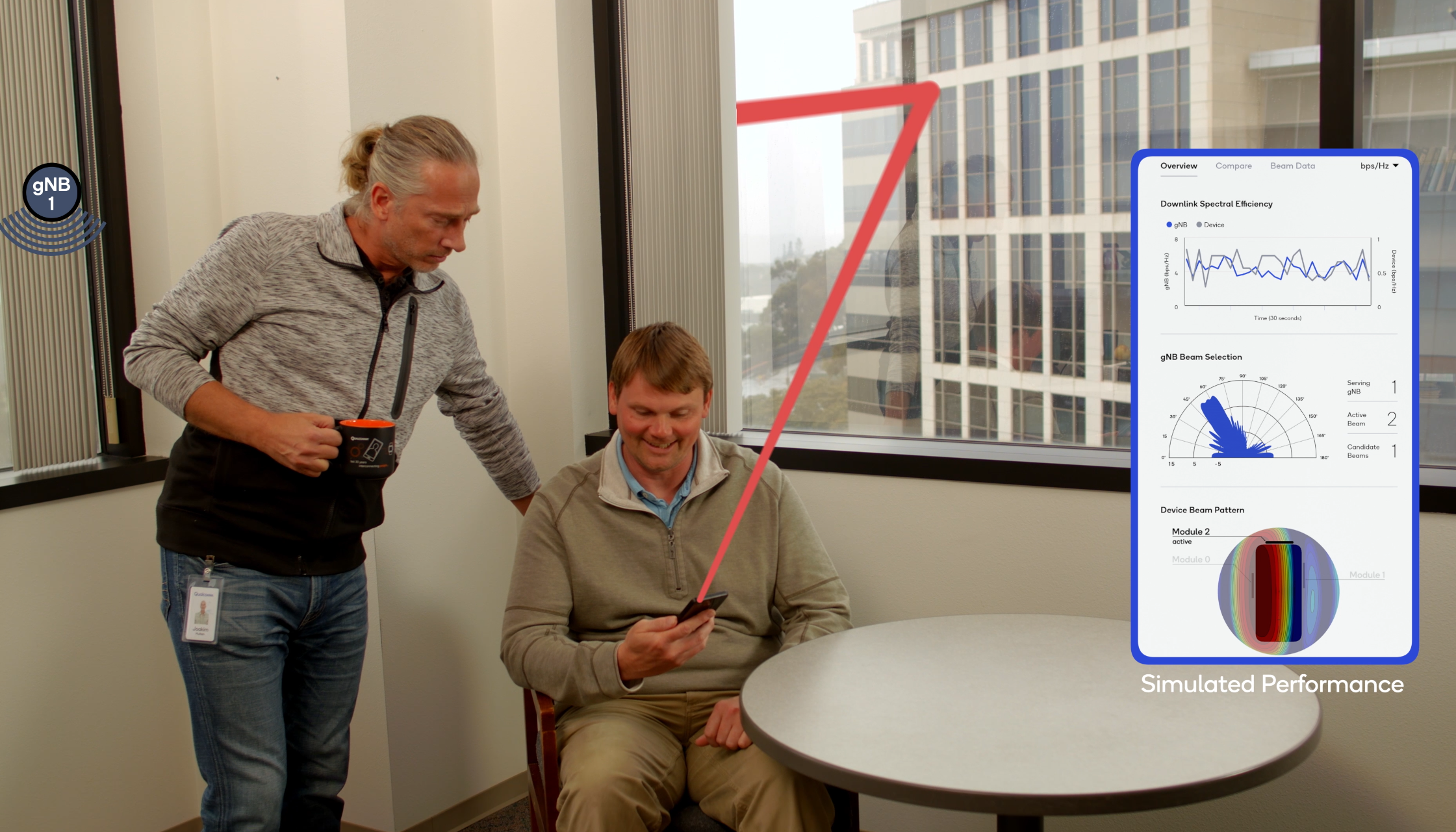
This is how the 5G network operates in the millimeter frequency range. Note that the experiment does not show that the maintenance of the 5G terminal can be transmitted from one 5G base station to another (mobile handover). Probably, in this experiment, this mode was not tested.
Source: https://habr.com/ru/post/447884/
All Articles